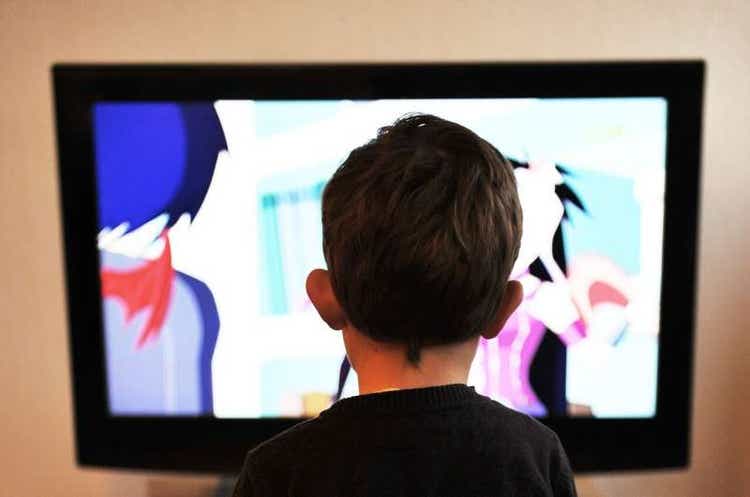Researchers Warn: TV Violence at Age 3 Linked to Behavior Problems by 15
Researchers Warn: TV Violence at Age 3 Linked to Behavior Problems by 15

Early exposure to television violence may have lasting effects on child development (Illustrative photo)
A groundbreaking longitudinal study has revealed alarming connections between early exposure to television violence and lasting behavioral issues in adolescence. The research, published in the Journal of Child Psychology and Psychiatry, followed children from age 3 to 15 and found significant correlations between violent media consumption and later aggression, emotional problems, and social difficulties.
Key Findings at a Glance
- Children exposed to violent TV at age 3 were 2.3 times more likely to exhibit aggressive behavior at age 15
- 68% of children who regularly watched violent programming showed increased emotional dysregulation in adolescence
- Effects persisted even after controlling for socioeconomic factors, parenting styles, and initial behavior problems
- The average preschooler in the study was exposed to 4.5 hours of violent content weekly
The Study: Methodology and Scope
The research team tracked 1,200 children from diverse backgrounds over a 12-year period, collecting data through:
- Parental reports of television viewing habits
- Direct observation of media consumption
- Teacher evaluations of school behavior
- Psychological assessments at multiple developmental stages
- Brain imaging studies for a subset of participants

The multidisciplinary research team analyzed data across multiple developmental stages
Why Early Childhood Matters Most
Dr. Elena Martinez, lead researcher and developmental psychologist, explains: "The preschool years represent a critical window for brain development. During this period, children are forming their understanding of social norms, emotional regulation, and conflict resolution. Exposure to violent content can fundamentally alter these developmental pathways."
Key neurological factors identified in the study include:
- Mirror neuron activation: Young children's brains automatically mimic observed behaviors, including violent actions
- Emotional desensitization: Repeated exposure to violence reduces normal empathetic responses
- Reality distortion: Preschoolers struggle to distinguish between fantasy violence and real-world consequences
- Stress response systems: Violent content triggers cortisol production, potentially rewiring stress regulation
Long-Term Behavioral Consequences
By age 15, children with early exposure to television violence showed marked differences across multiple domains:
| Behavioral Domain | Increased Risk | Common Manifestations |
|---|---|---|
| Aggression | 120-180% | Physical fights, verbal hostility, bullying |
| Emotional Regulation | 90% | Tantrums, mood swings, poor frustration tolerance |
| Social Competence | 75% | Difficulty making friends, poor conflict resolution |
| Academic Performance | 40% | Lower grades, attention problems, school suspensions |

Adolescents with early exposure to TV violence often struggle with emotional regulation and social interactions
Protective Factors: What Parents Can Do
While the findings are concerning, researchers emphasize that parents can implement effective protective strategies:
1. Mindful Media Selection
Choose age-appropriate, educational programming. Look for shows that model prosocial behavior and emotional intelligence.
2. Co-Viewing and Discussion
Watch programs with your child and discuss the content. Help them understand the difference between fantasy and reality.
3. Time Limitations
Follow the American Academy of Pediatrics guidelines: no more than 1 hour per day of high-quality programming for preschoolers.
4. Alternative Activities
Encourage creative play, reading, and outdoor activities that support healthy development.

Positive family interactions and alternative activities can mitigate the effects of media violence
Industry and Policy Implications
The study has sparked calls for:
- Stronger content warnings for violent programming
- Revised ratings systems that specifically address developmental concerns
- Public education campaigns about early childhood media exposure
- Increased funding for children's educational programming
Expert Commentary
"These findings underscore the need for a societal approach to protecting young children from developmentally inappropriate content," notes Dr. James Wilson, a pediatric neurologist not involved in the study. "The brain changes we're observing aren't just behavioral—they're structural and functional alterations that may persist into adulthood."
Looking Forward: Ongoing Research
The research team is expanding their work to investigate:
- The differential effects of various media formats (streaming vs. traditional TV)
- Potential protective effects of parental mediation techniques
- Long-term outcomes into early adulthood
- The role of interactive violent media (video games) in combination with TV exposure
Conclusion: A Call for Awareness and Action
This comprehensive study provides compelling evidence that early childhood exposure to television violence can have lasting behavioral consequences. While media is just one factor in child development, its impact during critical developmental windows appears significant. Parents, educators, and policymakers should consider these findings when making decisions about children's media consumption and developing protective strategies.
The researchers emphasize that these effects are not inevitable—mindful media habits, positive parenting, and early intervention can help mitigate risks and support healthy child development.